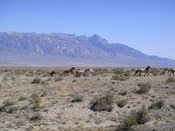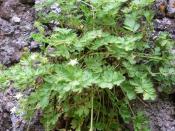Wild Horse Controversy
Wild horses by most standards are not wild animals at all but domesticated animals gone feral. Wild horses are non-native animals that populate the Western United States. Wild horses compete for habitat with other wild animal species, such as elk, mule deer, and pronghorn antelope. However, they also have to compete with other non-native animals like cattle, sheep, and goats. Not only do they have to compete with these non-native animals, they have to compete with them on the designated lands that were established for the wild horses.
When the Wild Free-Roaming Horses and Burros Act was passed, herd management areas were "in the area where presently found, as an integral part of the natural system of the public lands" (Public Law 92-195). If these areas were designated for the wild horses and burros, why are ranchers allowed to graze cattle, sheep, and goats on these protected lands? Money is the reason.
All non-native animals that graze within the herd management areas are declared as an Animal Unit Month or AUM. The cattle, sheep, and goat industries pay $1.35 per head per month to graze within herd management areas. According to Jared Bybee, Wild Horse and Burro Specialist with the Bureau of Land Management, Ely field office, "a third of all the grazing fees go back to the Bureau of Land Management for land management." None of the grazing fees money goes toward wild horse management. According to Bybee, "the money made at the wild horse auctions goes to the United States Treasury, not to the Bureau of Land Management." Therefore, each wild horse removed from these areas free up another AUM for cattle, sheep, and goats.
There are other miscellaneous reasons the Bureau of Land Management is influenced into making decreases in the wild horse populations.


